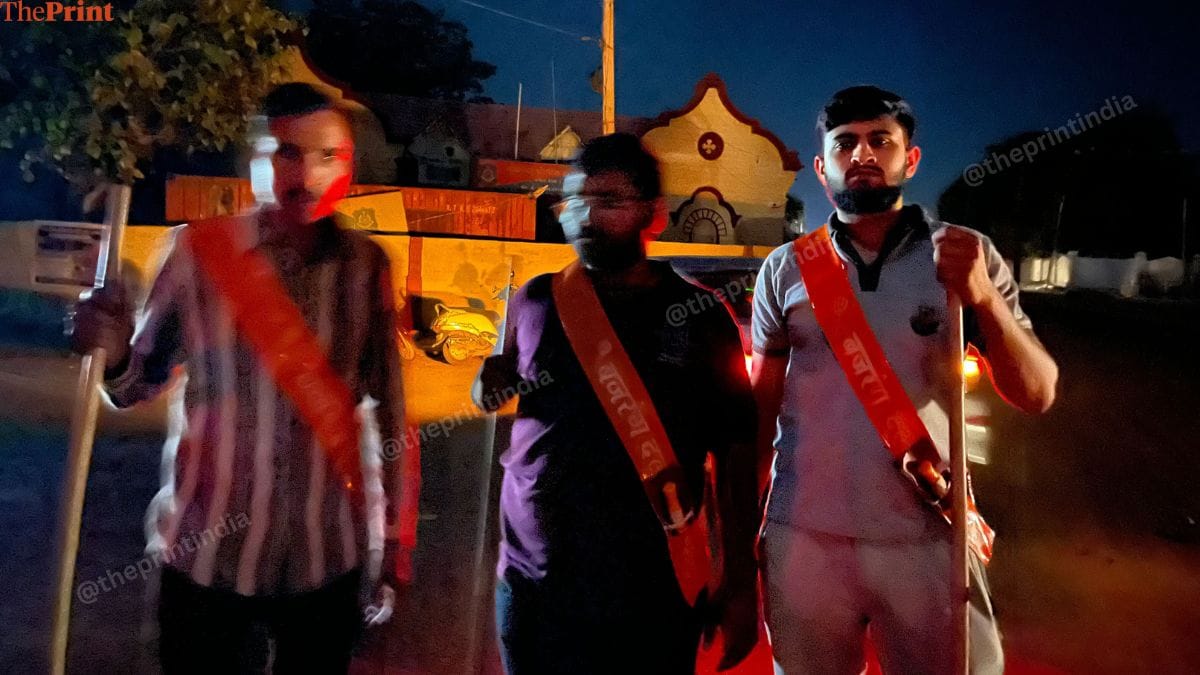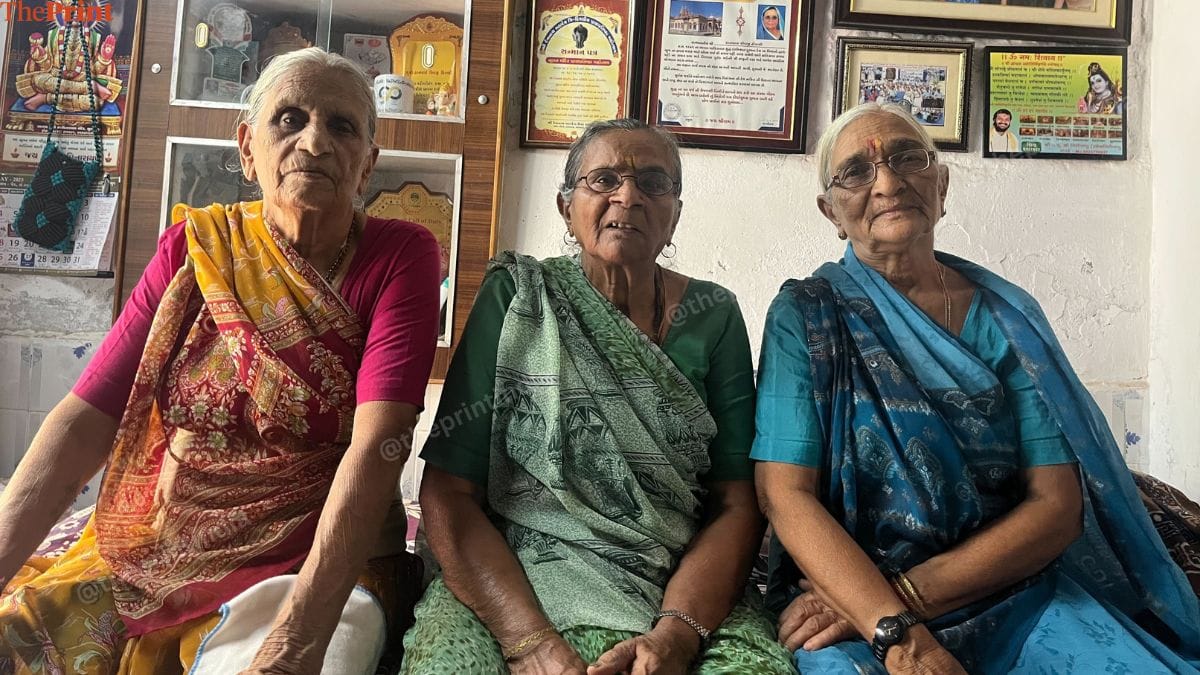Bhuj: On 8 May, it was 2.38 pm and I was at my desk in Delhi, working on the finer details of another story, when a message from my editor popped up: “Leave for Rajkot.”
I had just returned from a six-day trip to Jharkhand. Before that, I’d spent a few days reporting from the Wagah border and Gujarat. A small part of me thought I might finally get a few days off. But the story had other plans.
I stared at that message for two minutes before replying: “Okay.”
I didn’t know what exactly I’d find in Gujarat. The situation was developing by the hour. But I did know one thing: if tensions with Pakistan escalated, Kachchh would be one of the first places to feel it. Its location, its history—Bhuj always finds itself on the map in moments like this.
I called my father and brothers, bracing for a barrage of concern. But, like most Indian families in times of war, it quickly turned into pride.
“Don’t worry,” my father said over the phone. “This is for your country. Give your 100 percent.”
I packed quickly—a mic kit, a helmet, and a bulletproof jacket. Within hours, having hardly slept, I took off. By the next morning I had landed in Rajkot and, within 2 hours was on my way to Bhuj by car.
The journey takes about 5 hours, and, traversing the highway, I witnessed the blackout firsthand. Petrol pumps were shut; streetlights switched off, and the roads were quiet and shadowy. Around 11 pm, I reached my hotel, where the receptionist told me that there would be no light in the room after sunset—security protocol.
I didn’t wait to drop my bags and headed straight to a residential area where I heard people were still on the streets. That’s when I was stopped by a group of five or six young men—members of the Bajrang Dal—standing in the dark, aged maybe 20 to 25.

“Switch off your car lights,” one of them shouted to a passing vehicle.
This was the same night Bhuj was put on high alert after drone sightings. While the rest of the city had gone indoors, these young men were patrolling the roads. The only source of light was the moon. In its faint silver glow, shuttered shops, locked doors, and empty balconies came into view. The city felt like it had stopped breathing.
And yet, no one I met on the ground said they were afraid.
“We’re not scared of Pakistan,” one young man told me. “We trust our army. We trust our country.”
After gathering quotes and visuals, I returned to the hotel to file my story. I was still wearing the 10kg bulletproof jacket. My helmet sat beside my laptop.

The first night was restless. My phone buzzed constantly—updates from colleagues stationed in Kashmir and Jammu, videos of shelling, and visuals of drones. The alerts kept coming.
Then I got a message from a local source in Bhuj: “Drone spotted in Bhuj.”
My hands went cold. I kept staring out of the window of the room, thinking if I’d see something in the sky. I did not sleep and kept tracking the updates on my phone. As a reporter, I had to be ready. If something happened, I’d have to get to the spot immediately.
At 9 am, the next morning, I got my confirmation. A drone had indeed dropped in Adipur, some 15 km away, so I headed there straight away.
At the spot, I met an eyewitness who saw the drone fall. “I was having my morning tea when I saw it in the sky. Then it dropped, and smoke rose from the field. I ran toward it,” the man, around 38-40 years old, told me.
I asked him instinctively: “Weren’t you scared?”
He looked straight at me. “If it were up to me, I’d go fight at the border.”

As the day progressed, the situation in Bhuj felt even more tense. Police were turning cars back at checkpoints. The roads had slowly emptied out—no buses, no trucks, no movement. But I kept moving. After a Zoom update to our newsroom, I hit the ground again.
A few hours later, news of a stop in fighting trickled in. I stopped at a bus stop where a group of labourers was waiting to leave. “Everything’s shut. We don’t know when it’ll open again,” one of them said. They were headed to Ahmedabad. He, too, didn’t seem convinced the ceasefire would last.
“I don’t trust them. We’re going home.”
The next day, I went to Madhapar—a village just outside Bhuj. I wasn’t chasing breaking news this time. I had come to meet three women who had helped rebuild the Bhuj runway that had been bombed by Pakistan in 1971.
Most of the women from that time are no longer alive. But I met three—Kanbai Shivji Hirani, Samuben Vishram Banderi, and Shaambhai Khokhani—now in their eighties. When the sirens sounded again and the blackouts returned, their memories came rushing back.
They invited me in for tea and told me everything—how the bombing took place, and the sarpanch asked them for help, as well as about the green saris they wore to avoid detection and the sirens that signaled when to run and when to return.
“We used to leave our children and our elders at home and go work on the runway from 7 in the morning to 7 at night,” Kanbai said.

“I’d still go if they asked us to,” Samuben added. “And this time, I’ll take the younger ones with me.”
12-year-old Sagar, a local boy, had visited them four times in two days. “How many bombs did you see? Were there drones in 1971, too? How did you fix a runway in just three days?”
They answered all his questions. Over and over again.
“I never get tired,” Kanbai told me. “This is how we teach love for the country now—not just with stories, but with truth.”
I saw firsthand how the courage of the women, who once ran toward the bombs with shovels in their hands, as they sat proudly today, teaching courage with nothing but a cup of tea and a steady voice.
(Edited by Sanya Mathur)
Also Read: Stoicism with a hint of anguish—a view of India-Pakistan tensions from border villages near Amritsar

